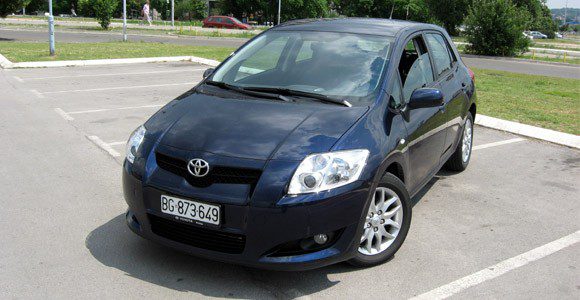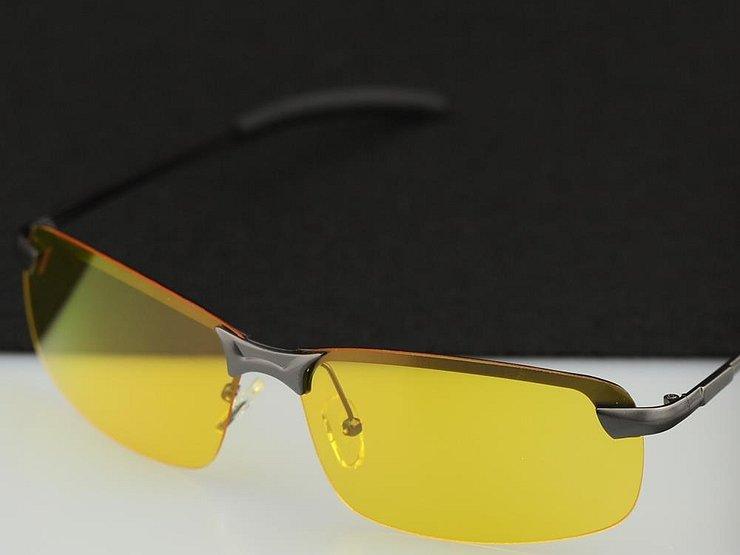
Test: Toyota Auris 1.4 D-4D Luna (5 gates)
Content
Maybe Toyota in Auris is exaggerating ambition. In 2007, it replaced the legendary Corolla, which was not a design overkill, but convinced millions of people of its reliability. They then changed the name to a successor and tried to convey to him what the Corolla lacked: emotion.
Of course, the first Auris was prettier, with an unusually designed center console and a gear lever, even avant-garde, but it still didn't work out. Most (Europeans) were a little disappointed at the wheel. Sporty design doesn't mean a sports car yet, and since Toyota has no real experience with dynamic models (we won't even mention the failed TS models), it wasn't until three years later that they had to fix it.
But history says the Japanese are fast learners. Also (or especially) Toyota. This is why the exterior of the Auris has been improved: new headlights have been installed, the bonnet and bonnet have been redesigned, the side direction indicators have been moved to the outside rearview mirror housing, and the overall length has been increased by 25 millimeters. to larger bumpers.
More pronounced bumpers and increased overhangs by 15mm (front) and 10mm (rear) contribute to a sportier look, and compared to the school's predecessor, it looks just fine.
Then we got busy with the interior. Customers didn't take the oddly shaped handbrake for granted, so the designers took a step back and placed a more traditional handbrake lower between the seats. There is now a taller, closed box above the gear lever, which can also be used as a comfortable elbow, and the dashboard top is softer.
Above the gauge gauges and above the closed top box in front of the navigator, the designers installed a layer that is more pleasing to the eyes and especially to the fingers, which gives the interior a touch of prestige. And when we add an even sportier, stripped-down steering wheel with comfortable buttons that the Auris has inherited from other (junior) models, we get a very pleasant interior.
The only minor downsides are the front seats as the competition is much more generous with a lower seating position and a longer seating area, but again, that's not too bad to get used to. The air conditioner caused more gray hair, since in automatic mode it constantly blew from the upper nozzles, although this was not necessary.
The aforementioned annoying defect, which the Corolla already had, then had to be manually adjusted to keep the sinuses from protesting at the end of the day. Optitron counters with white and orange backlighting remain unchanged, as they are transparent, unusual and not in the least disturbing even at night.
The multimedia ports (USB and AUX) are now tucked away in the top drawer, but unfortunately the bottom drawer isn't the most spacious. The Luna-equipped Auris boasts seven airbags, which is very credible considering it received five stars in the Euro NCAP tests in 2006. Unfortunately, the VSC stabilization system still graces the accessories list.
Toyota boasted of listening to (European) drivers' comments and refining systems that ignored the driving feel too much. Thus, the electrically controlled power steering (EPS or Electric Power Steering) is much more generous with feedback, and the chassis with softer shock absorbers is more tuned, reads adapted to European taste.
Without remorse, we can confirm that Japanese engineers, in cooperation with European ones, went in the right direction. The driving feel is much better and more authentic, although the Auris can still be hidden when compared to the Focus, Golf, Civic or the new Astro.
Steering relentlessly doesn't mean Toyota hasn't eliminated the artificial feel on the steering wheel, in fact, they've only limited it a little. It's the same with the gearbox. Excellent performance (short movements, precise gear shifting) spoils only too mediocrity. As if to think only of her gentle hands. ...
The chassis, of course, is still classic (McPherson struts in the front and semi-rigid in the rear), but for more enjoyment, you need to buy at least the 2.2 D-4D version, which has individually suspended wheels at the rear. This is why the Auris has four times the disc brakes, which gives the balanced (not sporty!) Chassis a sense of reliability.
The engine is an old familiar from Toyota's shelves, a 1-litre four-cylinder with common rail technology and piezo injectors. Even though it has only eight valves and low displacement (especially for diesels!), between 4 and 2.000 rpm in combination with a turbocharger, it is snappy enough that you won't need it again.
When the turbocharger has not yet come to the aid of diesel technology, it becomes quite anemic. In the city, you would prefer to shift into first gear when cornering at 2.000 degrees, although this is actually too small, so you better wait for a respite from the forced charging. Also, do not drive the main shaft above 90 rpm.
The engine can spin a thousand more, but it's only loud and certainly not peppy. Tires with lower rolling resistance, lighter weight and a lower vehicle position, and a lower engine loss, help reduce fuel consumption, they said. ...
Toyota calls it Toyota Optimal Drive and with a moderate driver it means moderate consumption and low pollution (124 g CO2 / km). Well, our 90 "horses" consumed an average of 6 liters per 7 kilometers, which can be partly attributed to the driver.
Toyota is undoubtedly heading in the right direction and is gradually adding an emotional boost to the Auris. But the engine is also important when it comes to emotion, so we can't wait to see how the new Auris will turn out to be with a more agile turbo diesel or gasoline engine.
Alyosha Mrak, photo: Aleш Pavleti.
Toyota Auris 1.4 D-4D Luna (5 doors)
Basic data
| Sales: | Toyota Adria Ltd. |
|---|---|
| Base model price: | 18.500 € |
| Test model cost: | 20.570 € |
| Calculate the cost of auto insurance | |
| Power: | 66kW (90 KM) |
| Acceleration (0-100 km / h): | 12,0 with |
| Maximum speed: | 175 km / h |
| Mixed flow ECE: | 4,7l / 100km |
Technical information
| engine: | 4-cylinder - 4-stroke - in-line - turbodiesel - front mounted transverse - displacement 1.364 cm? – maximum power 66 kW (90 hp) at 3.800 rpm – maximum torque 205 Nm at 1.800–2.800 rpm. |
|---|---|
| Energy transfer: | front wheel drive - 6-speed manual transmission - 205/55 / R16 V (Continental ContiPremiumContact2) |
| Transportation and suspension: | limousine - 5 doors, 5 seats - self-supporting body - front single wishbones, spring struts, double wishbones, stabilizer - rear axle shaft, coil springs, telescopic shock absorbers, stabilizer - front disc brakes (forced cooling), rear disc 11,0 - ass 55 m – fuel tank XNUMX l. |
| Mass: | empty vehicle 1.260 kg - permissible total weight 1.760 kg. Performance (factory): top speed 175 km / h - acceleration 0-100 km / h 12,0 - fuel consumption (ECE) 5,6 / 4,2 / 4,7 l / 100 km, CO2 emissions 124 g / km . |
| Box: | Trunk volume measured using AM standard set of 5 Samsonite suitcases (total 278,5 L): 5 places: 1 backpack (20 L); 1 × aviation suitcase (36 l); 1 suitcase (68,5 l) |
Our measurements
| T = 18 ° C / p = 1.030 mbar / rel. vl. = 41% / Mileage condition: 3.437 km | |
| Acceleration 0-100km: | 12,8s |
|---|---|
| 402m from the city: | 18,5 years ( 118 km / h) |
| Flexibility 50-90km / h: | 10,2 / 19,7s |
| Flexibility 80-120km / h: | 14,8 / 17,1s |
| Maximum speed: | 175km / h (V. and VI.) |
| Minimum consumption: | 6,0l / 100km |
| Maximum consumption: | 7,2l / 100km |
| test consumption: | 6,7 l / 100km |
| Braking distance at 100 km / h: | 38,7m |
| AM table: | 40m |
| Noise at 50 km / h in 3rd gear | 57dB |
| Noise at 50 km / h in 4rd gear | 56dB |
| Noise at 50 km / h in 5rd gear | 55dB |
| Noise at 50 km / h in 6rd gear | 54dB |
| Noise at 90 km / h in 3rd gear | 64dB |
| Noise at 90 km / h in 4rd gear | 62dB |
| Noise at 90 km / h in 5rd gear | 60dB |
| Noise at 90 km / h in 6rd gear | 60dB |
| Noise at 130 km / h in 3rd gear | 68dB |
| Noise at 130 km / h in 4rd gear | 67dB |
| Noise at 130 km / h in 5rd gear | 66dB |
| Noise at 130 km / h in 6rd gear | 64dB |
| Idling noise: | 38dB |
| Test errors: | unmistakable |
Overall rating (294/420)
At Urban Cruiser, we are more enthusiastic about the engine, which can be attributed to the lighter weight. The progress in powertrain and steering is clear, but Toyota still has work to do.
Exterior (11/15)
According to the majority, it is more beautiful than its predecessor. Then bingo!
Interior (90/140)
In terms of the size of the cabin, it is completely comparable to its competitors, it loses several points in terms of air conditioning and equipment, and wins in quality.
Engine, transmission (47
/ 40)Despite the eight valves, the engine is modern but too weak, and the drivetrain and chassis are better.
Driving performance (59
/ 95)Mid-position and stability, well-being under full braking.
Performance (18/35)
When the turbocharger is running, it is average, otherwise it is below average.
Security (46/45)
We praise the seven airbags and class ESP as an accessory.
Economy
Although it is assumed to be a spare, it did not perform well in the tests, it retains its value as it was used.
We praise and reproach
motor from 2.000 to 4.000 rpm
six-speed gearbox
workmanship
steering wheel shape
seven airbags
engine below 2.000 rpm
the climate is blowing
middle place
does not have a stabilization system (VSC)
conventionally used closed boxes in front of the passenger

